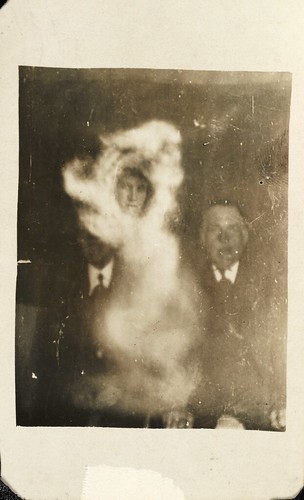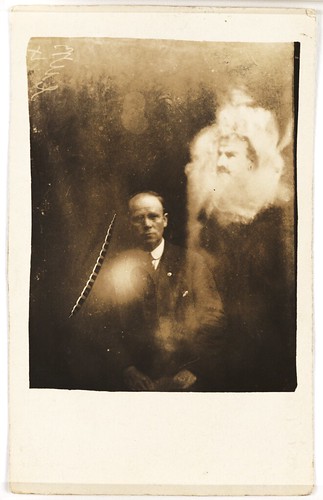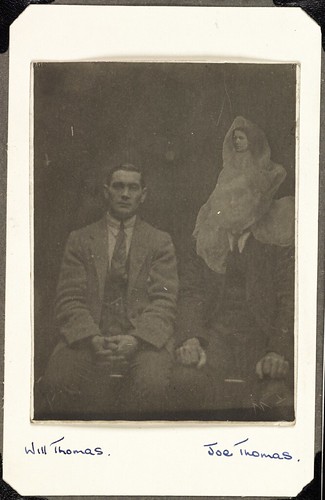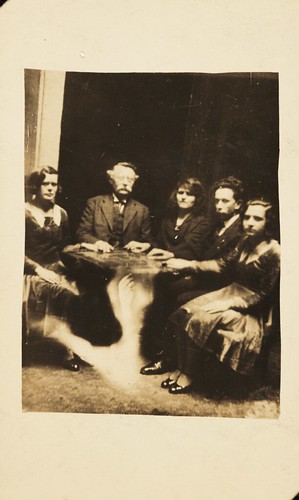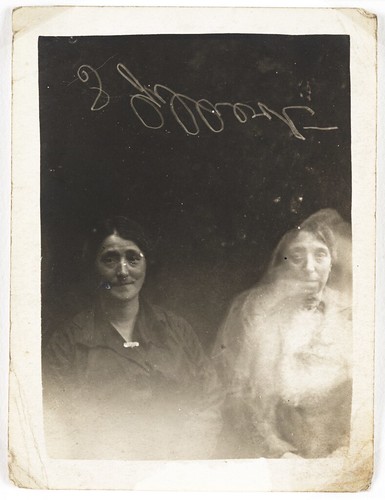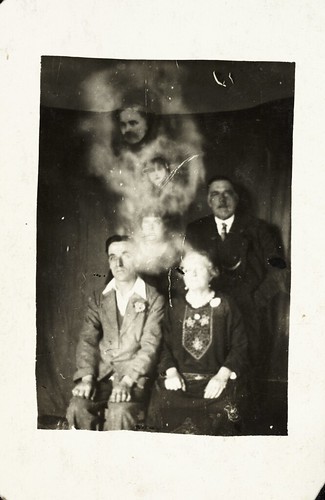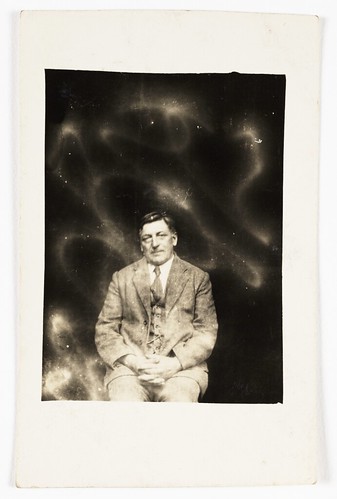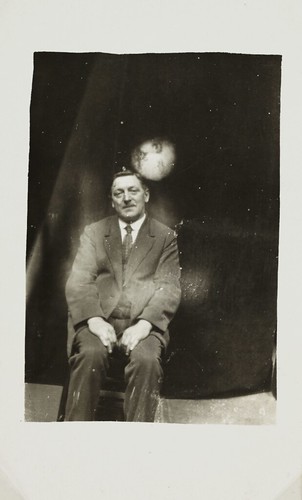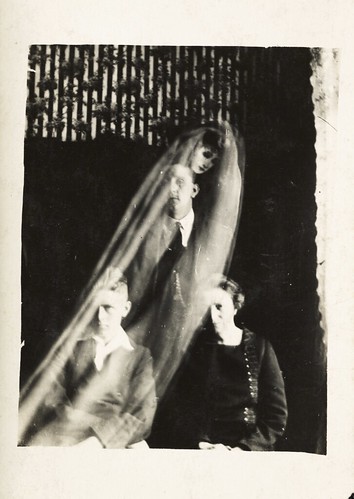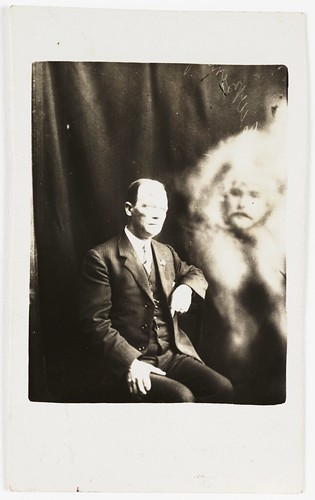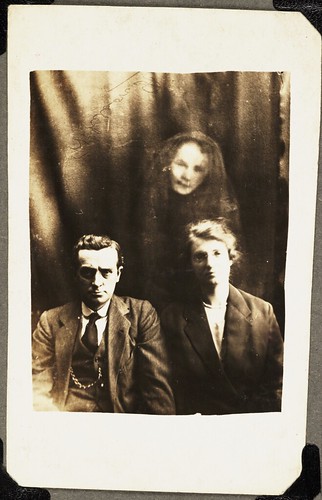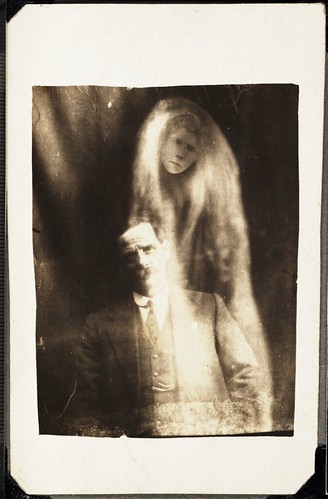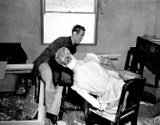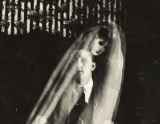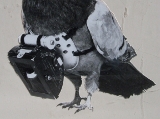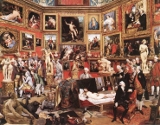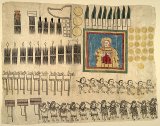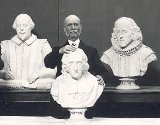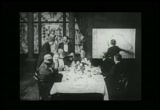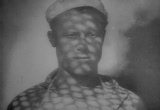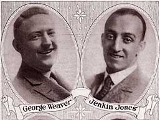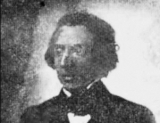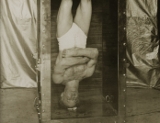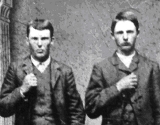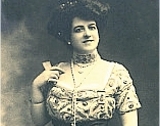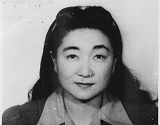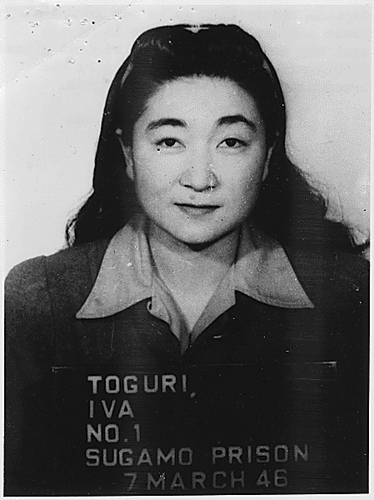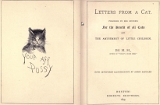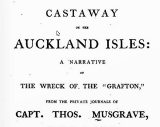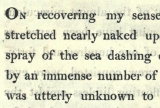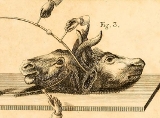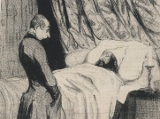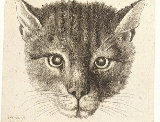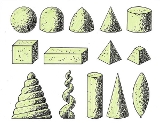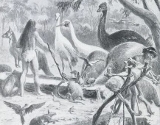In 1906 the American physician and neurologist Henry Morton Prince published his remarkable monograph The Dissociation of a Personality in which he details the condition of ‘Sally Beauchamp’, America’s first famous multiple-personality case. George Prochnik discusses the life and thought of the man Freud called “an unimaginable ass”.

1.
Morton Prince—physically hale, philosophically heterodox, ethically uncompromising, psychologically splintered—epitomizes a classic New England character at its sunset hour. Indeed, Prince’s fiery conviction that he could make all his contradictory elements hang together makes his own psychology as fascinating as that of the patients and politicians he scrutinizes. And even when he fumbles in making a grand diagnosis of the foibles of others, it sometimes seems that it’s precisely Prince’s lack of a compelling master-theory that makes his work such a rich repository of individual observations. Until Freud and the rearrangement of values occasioned by the Great War soured his spirit, Prince sustained a note of plucky anarchy in his approach to almost all social problems. In a typical instance of this happily contrarian strain to Prince’s thoughts, he once responded to a suggestion by Upton Sinclair that intercollegiate football be abolished as a “killer of thought” by announcing that what should be abolished was rather the professional coach, whose last duty before surrendering his office should be “handing the game back to the boys.”
Less felicitous was Prince’s combative sense of near infallibility as a judge of what was wrong with everyone else—the quality his famous patient Miss Beauchamp once described as Prince’s tendency to be “so awfully wrathy and superior.” Prince fought back against the era’s double threat of moony spiritualists and zealous psychoanalysts on the grounds of his adversaries’ refusal to rationally engage with evidence that challenged their axiomatic beliefs. But confronted with the intractability of those who could not see the virtues of his own high-minded middle way, Prince tended to swerve over into untempered opposition that partook of the same absolutism he condemned in others. When Freud’s disciple Ernst Jones objected to his pugnaciousness, Prince dismissed Jones outright—not for his ideology but for the wimpiness of his come-back punch. “Can you imagine John Brown, Luther, Calvin…whimpering ‘like a girl’ because their opponents hit them back or because they would not believe?” he railed to a colleague. Even at his more offensive moments, the vigor of his high dudgeon makes for lively reading.
2.
Prince’s lifelong focus lay in charting the relationship between body and mind. He never forgot an experience he’d had in church as a child when the preacher abruptly pointed above the congregation’s head to a chandelier swaying in the breeze and remarked that the human body was affected by the spirit exactly as those dangling crystals were by the wind. The puzzle of what, precisely, this correlation meant haunted Prince’s professional life. He strove to show that there was, at the last, no opposition between mental function and bodily mechanics because there was no integral distinction between the two. But the question of what this seamless contiguity implied for ultimate questions of human nature was a matter on which he waffled with uninspired ambivalence.
For the first part of his career, Prince sought to minimize the element of spirit altogether by advocating a purely materialist vision of mental dynamics. Thought and emotion did not act to influence the operations of the brain; they were the substance of those operations. In the 1880s and 1890s, Prince contributed to the evolution of a sophisticated behaviorist theory of mental health that anticipated many aspects of cognitive therapy. He argued that neuroses developed through the often random associations between negative experiences and phenomena surrounding such experiences. These associations were then fixed through repetition and habit; but could be unraveled in treatment through aggressive “conditioning,” both physical and ideational, which eventually reconfigured corrosive behavioral patterns.

Examples of the deterioration of Sally Beauchamp's writing "when badly 'squeezed'", given in the appendix of Dissociation of a Personality (1906).
As was often the case with Prince, key theoretical positions were born of personal experience. Prince’s entire family suffered from a thunder phobia that led them to flee inside closets, dive beneath beds and rush into each other’s shivering arms to hide from storms. Prince finally conquered the syndrome by forcing himself to remain outside in the most violent thunder fusillades until his angst about the warring heavens was quashed.
Regardless of his motivations, by placing so strong an emphasis on the role of learned habits of association in the development of symptoms, Prince helped undermine the position of social conservatives who condemned whole families, neighborhoods and populations on the basis of hereditary degeneration. Concurrently, he bolstered the case for the work of New England’s large network of progressive civic reformers, in which he himself played a passionate role. Indeed, Prince’s understanding of the complex web of motives that converged in the behavior of individuals and states led to his championing numerous issues of social justice in national and international arenas. Prince attacked the Sacco-Vanzetti verdict as a gross, cynical manipulation of the jury’s ignorance about the working of perception and memory. He fought for the League of Nations as an essential counterbalance to monolithic, megalomaniacal state enterprise of any stamp.
By the turn-of-the-century, Prince stood at the forefront of a cadre of Boston psychotherapists whose open minds, erudition and dogged clinical labors had upended previous American understandings of how the mind worked. Building on scaffolding erected by such pivotal French psychologists as Jean Martin Charcot and Pierre Janet, Prince linked neuroses to extreme “dissociations” between mental states that resulted in a kind of psychological deadlock. This deadlock manifested in rigid behaviors that failed to respond to external reality’s flux and flow. To reintegrate the self, Prince collaborated with his fellow New Englanders in developing a surprisingly sophisticated proto-Freudian version of talk therapy. Like others in his circle, he was also a talented hypnotist who translated a subtle understanding of the power of suggestion into effective clinical practice. Together with colleagues like James Jackson Putnam, Prince began to outline a new, holistic approach to the challenge of psychological treatment that took elements of older, so-called “somatic” treatments like hydrotherapy and electric therapy and melded these onto language-based probings of patients’ psychological conditions.
There were still some wild and woolly edges of his methodology to be sure. In The Dissociation of Personality, Prince’s best-selling, hugely influential account of America’s first famous multiple-personality case, he describes a (literally) climactic moment of treatment that qualifies as not just surprising, but jaw-dropping. In order to fully exorcise the sassy alternative personality nicknamed “Sally” who had been tormenting his patient, Prince began applying an established technique whereby he put pressure on a “hypno-genetic point” over the patient’s spine. “With a strength that I did not think she possessed,” Prince records, “she fought, wrestled, struggled to throw off my grasp, and to resist the subtle power. The rush of physical sensations through her body, and the mental feeling that her consciousness was being engulfed in oblivion were more than she could bear. In mental anguish she shouted aloud. Thus for two hours we struggled.”
Two hours? Try to picture this insane, erotic wrestling match in a prim Boston medical office between a righteous, jaunty medical luminary then in his mid-fifties and a withdrawn college-age young woman of humble origins. Rather than the brush of Prince’s actual portraitist John Singer Sargent, one longs for the hand of Francis Bacon to do the duel justice.
There’s something symptomatic of Prince’s deeper conundrum in this ethically chaotic moment of full-throttle body-mind therapy. For all his intermittent clinical acumen, the unbending value systems Prince and his fellow Boston doctors inherited from their forbearers ultimately hindered them from orienting their practice effectively toward modernity. Prince had seen through the past, but when he looked into the future, he felt so revolted by what he saw that he tended to violently swerve his gaze backward again. Thus, in works like The Psychology of the Kaiser and The Creed of Deutschtum, Prince revealed himself to be enormously prescient about the dangers of German militarism and the militaristic state of mind as such. In the former study he described militarism under the Kaiser as “something much more than a system of defense against encroachments from within and without—it is a mode of, and organization for, attack in the enforcement of progressive policies, of national growth, and of the will of the State, whatever direction these may take.” Yet in trying to fashion an argument for American interventionism against these kinds of threats in the international arenas Prince fell back on a jingoistic sense of his home country’s historic moral clarity. And in attempting to explain why America had so far failed to respond to the German invasion of Belgium in 1915, he could only surmise that as “a polyglot nation speaking many tongues” his country had lost “the homogeneity of a single race” that had hitherto enabled the maintenance of a national conscience.

3.
In 1908 Sigmund Freud received an invitation from the president of Clark University to come to the United States and lecture on psychoanalysis at the school’s 20th anniversary celebration, scheduled for July. With his theories failing to gain traction among professional circles at home, and the psychoanalytic movement itself already fissured by nasty spats, one might have expected Freud to seize this opportunity to export analysis to the New World. However, Freud politely declined the offer, citing in his refusal letter the economic hardship of preempting the seasonal loss of income that would descend with Vienna’s summer hiatus. In private, however, he gave another explanation. To his disciple, Karl Abrams, who’d recently had a paper concerned with the psychology of sexuality rejected by The Journal of Abnormal Psychology, (the periodical Prince had founded and continued to edit), Freud remarked, “Morton Prince, who has always been a kaleidoscopic character, is this time really lamentable. Where do the Americans expect to get with this fear of public prudery?” Writing to Jung a few days later, he elaborated on his apprehensions, noting his belief that “once they discover the sexual core of our psychological theories they will drop us. Their prudery and their material dependence on the public are too great. That is why I’ve no desire to risk the trip there in July.”
Freud almost didn’t come to the United States at all because of his virulent distaste for a host of American bugbears that seemed to dovetail in the person of Morton Prince, whom Freud would soon be calling “the most arrogant ass imaginable.” Indeed Prince— a champion yachtsman, a talented horseman, a member of many jolly social clubs and an all-around emblem of sporty Yankee self-reliance fit the model of the privileged WASP that made Freud most self-conscious about his own ancestral stereotypes.
But for all of Freud’s understandable apprehensions about Prince having a constitutional aversion to psychoanalytic theory, (“the gentle zephyrs of prudery blowing across from America” were ones for which Prince had “a quite special organ” Freud told Jung), he failed to take the measure of the man himself. Not only was Prince not a prude, he confessed in later years that with some patients he’d even pushed too hard to find a sexual etiology to their symptoms where none actually existed. Indeed, after exposure to Freud’s work, Prince’s practice continued to reflect many aspects of Freudian theory. Most of all, Freud misjudged in assessing that Prince was a threat to Freud, rather than the other way around. As Prince wrote looking back on the era of Freud’s arrival in America, “Freudian psychology…flooded the field like a full-rising tide, and the rest of us were left submerged like clams buried in the sands at low water.”
Rather than the importance of sexuality to human’s psychological make-up, what Prince challenged was the dogmatism with which Freud’s axioms were propounded—the insistence that all neurotic symptoms were rooted in sex. (To name but one exception important to Prince, he contended that the convolutions of pride and shame could also distort mental health.) Prince summed up his objection to Freud in a response to an attack by Jones recorded in the 1911 Journal of Abnormal Psychology: “it sometimes seem as if the followers of Freud care more for the acceptance of their method—for being baptized in the faith, than for the determination of truth.” For himself, he says, in the spirit of his one-time mentor, William James, “I don’t care a button what method is employed in the investigation of any given problem, provided it does not lead to fallacies in the results.”
It was this mobility of ideological allegiance that got the goat of the Freudians and stoked their hostility to him. Yet given its latter-day history, Prince’s balanced agnosticism about analysis appears only too justified. Now that the Freudian tide has receded, it is Prince’s early support for cognitive therapy that appears remarkably forward looking, while Freud’s opus—rightly or wrongly—has been largely side-channeled into cultural studies programs of the academy.
We have much to learn from re-examining figures like Prince who occupy a pivotal position in early 20th Century psychological debates, before the dogmatism of Freud’s disciples crowded out elements that might have fostered a more fruitfully heterogeneous approach to psychotherapy. Reading their copious writings, we catch glimpses of multiple intriguing alternative histories—and, perhaps, come to question the orthodoxies of our own time.
George Prochnik is a New York-based writer. His most recent book is In Pursuit of Silence: Listening for Meaning in a World of Noise (Doubleday, 2010). Prior to that, he wrote Putnam Camp: James Jackson Putnam & the Purpose of American Psychology (Other Press, 2006), a New York Times “Editor’s Pick.” A regular contributor to Cabinet magazine, he is currently at work on a book about early 20th Century case histories involving madness, murder, freaks and elephants..
Links to works
- The Nature of Mind and Human Automatism (1885)
- The Dissociation of a Personality; a Biographical Study in Abnormal Psychology (1906)
- The Unconscious: The Fundamentals of Human Personality Normal and Abnormal (1914)
- The Creed of Deutschtum, and Other War Essay including The Psychology of the Kaiser (1918)
- Introduction by Morton Prince in My Life as a Dissociated Personality by B.C.A (1909)

